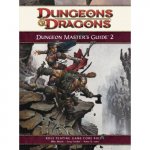MoutonRustique
Explorer
One thing that would probably have been an immense boon to 4e would have been differently "statused" monsters as a more "standard approach".
We get some of that with some creatures having a regular (standard) version, and then a higher-level minion version, but it could have been so much better.
Imagine a Monster Manual with this approach to many creatures. This could have been the ogre entry
Ogre level 2 Solo
Ogre level 4 Elite
Ogre level 8 standard, Ogre-variant level 10 (better armour and weapons)
Ogre level 14 minion
It would have really explained the idea behind the [solo/elite/standard/minion] tags. It could also, very easily have come with some sidebars for special case monsters such as dragons or beholders explaining that using them as [standard] creatures, while possible, is probably going to result in a disservice to the fiction - unless thought has been put into it.
It also has the added benefit of allowing the used model of different versions for many creatures - at various power-levels : no need to stat all 4 states for each version. Just a few sidebars with designer intent and suggestions : don't create minions with super strong action-denial. Give the Elite version cooler powers than a standard version, how to preserve the identity of a creature when changing it's status, etc, etc.
We get some of that with some creatures having a regular (standard) version, and then a higher-level minion version, but it could have been so much better.
Imagine a Monster Manual with this approach to many creatures. This could have been the ogre entry
Ogre level 2 Solo
Ogre level 4 Elite
Ogre level 8 standard, Ogre-variant level 10 (better armour and weapons)
Ogre level 14 minion
It would have really explained the idea behind the [solo/elite/standard/minion] tags. It could also, very easily have come with some sidebars for special case monsters such as dragons or beholders explaining that using them as [standard] creatures, while possible, is probably going to result in a disservice to the fiction - unless thought has been put into it.
It also has the added benefit of allowing the used model of different versions for many creatures - at various power-levels : no need to stat all 4 states for each version. Just a few sidebars with designer intent and suggestions : don't create minions with super strong action-denial. Give the Elite version cooler powers than a standard version, how to preserve the identity of a creature when changing it's status, etc, etc.




